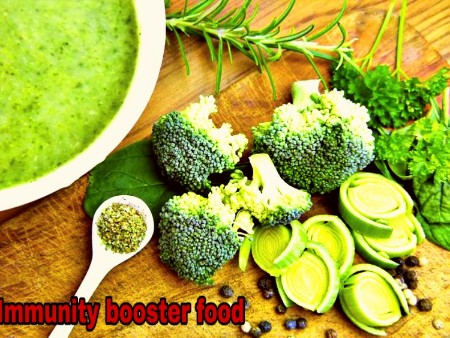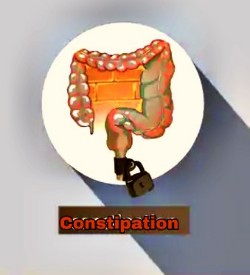पोषक तत्वों से भरपूर खाद्य पदार्थों के साथ अपनी Immunity system को मजबूत करना फ्लू और ठंड के मौसम की शुरुआत में विशेष रूप से महत्वपूर्ण हो जाता है, और अब आपके शरीर को बढ़ावा देने का समय है।
ठंड का मौसम वह अवधि है जब सूरज की रोशनी और पानी की मात्रा में कमी, एक साथ बढ़ तनाव के साथ, Immunity को दबा देती है और रोगजनकों से लड़ने की क्षमता को प्रभावित करती है।
अच्छी खबर यह है कि ऐसे खाद्य पदार्थ हैं जो स्वाभाविक रूप से Immunity system को बढ़ावा देते हैं और उन्हें अपने दैनिक आहार में शामिल करना बीमारी को रोकने में भी मदद कर सकता है। और जब कुछ गलत हो जाता है, तो ये खाद्य पदार्थ आपकी बीमारियों से तेजी से उबरने में मदद करेंगे!
आपकी Immunity को बढ़ाने के लिए 10 सर्वश्रेष्ठ food suppliments
Also read: दलिया खाने के फायदे Dalia Khane Ke Fayede
1. जामुन
जामुन Vitamin C और Antioxidant में समृद्ध हैं, लेकिन हाल ही में वैज्ञानिकों ने स्टिलबैनोइड्स नामक नए यौगिकों की खोज की है। यूएस जर्नल ऑफ मॉलिक्यूलर न्यूट्रीशन एंड फ़ूड रिसर्च में प्रकाशित एक अध्ययन से पता चला है कि स्टिलबैनोइड्स कैथेलिसिडिन एंटीमाइक्रोबियल पेप्टाइड (सीएएमपी) जीन की अभिव्यक्ति को बढ़ाते हैं, जो healthy immune function के लिए महत्वपूर्ण है। स्ट्रॉबेरी, ब्लूबेरी, रास्पबेरी और ब्लैकबेरी कुछ सबसे पौष्टिक फल हैं और इसलिए हर आहार में उत्कृष्ट प्रतिरक्षा बूस्टर हैं।
2. अदरक
आयुर्वेद में, अदरक को वीभेसाजाज के रूप में जाना जाता है, जिसका अर्थ है सार्वभौमिक चिकित्सा। यह उग्र जड़ सूजन को कम करने और संक्रमण को रोकने में मदद करने के लिए दिखाया गया है। यह विशेष रूप से जठरांत्र संबंधी मार्ग के लिए भी फायदेमंद है, पाचन एंजाइमों के स्राव को प्रोत्साहित करने और पोषक तत्वों के अवशोषण में सुधार करने में मदद करता है।
 |
| Immunity को बढ़ाने के लिए 10 best food supplements |
3. शहद
इसमें antiviral और antibacterial गुण होते हैं जो बीमारी से लड़ने में मदद करते हैं और शरीर में White Blood Cells के उत्पादन का समर्थन करते हैं जो हमारे शरीर में संक्रमण से लड़ते हैं।
4. बाओबाब
मानव शरीर स्वयं Vitamin C का उत्पादन या भंडारण नहीं कर सकता है, इसलिए हमें यह सुनिश्चित करने की आवश्यकता है कि हम इसे अपने दैनिक आहार से प्राप्त करें। बाओबाब पाउडर (10 ग्राम या 2 चम्मच) की एक सेवारत आपके दैनिक Vitamin C की आवश्यकता का 33% प्रदान करती है। Vitamin C के प्रमुख लाभों में से एक यह है कि यह Immune system को मजबूत रखने में मदद करता है, इस प्रकार संक्रमण, बीमारियों और अन्य स्थितियों के खिलाफ शरीर की रक्षा में सुधार होता है। इसके स्वादिष्ट फल और खट्टे स्वाद के साथ, बाओबाब पाउडर किसी भी स्मूथी में फिट बैठता है।Boost yourself product में, हम कई उत्पादों में बाओबाब पाउडर का उपयोग करते हैं - हेल्दी वेट रिलेक्स, कोलेजन सुपरफूड्स, पाचन, ऊर्जा।
5. स्पिरुलिना
स्पिरुलिना एक प्राचीन सुपरफूड है जिसमें Vitamin और minerals का एक spectrum होता है जो शरीर और Immune system को मजबूत करता है। कैलिफोर्निया विश्वविद्यालय, डेविस में एलर्जी और क्लिनिकल इम्यूनोलॉजी के प्रोफेसर एरिक गेर्शविन के एक अध्ययन के अनुसार, स्पिरुलिना में उपयोगी Cytokines की मात्रा बढ़ जाती है जो कि सूजन और संक्रमण से लड़ने वाले यौगिक हैं। "उनके Cytokines का सुझाव है कि स्पिरुलिना इंट्रासेल्युलर रोगजनकों और परजीवियों से बचाता है और सूजन संबंधी उत्तेजनाओं को दूर कर सकता है जो शरीर को संक्रमण और संभावित हानिकारक सूक्ष्मजीवों से बचाने में मदद करते हैं।
6. हल्दी
हल्दी लंबे समय से एक powerful immune system बढ़ाने वाला, एक प्राकृतिक antiinflammatory और एक शक्तिशाली antioxidant रूप में जाना जाता है। हल्दी, करक्यूमिन में सक्रिय यौगिक में antiviral और antifungal गुण होते हैं जो संक्रमण और बीमारियों से सुरक्षा प्रदान करते हैं। हल्दी को बूस्ट योरसेल्फ के सुपरफूड ब्लेंड्स के अंदर fibre मिश्रण के पाचन में पाया जा सकता है।
7. मका जड़
Maca तनाव को नियंत्रित करके immune system को मजबूत करता है। पोषक तत्वों से भरपूर adaptogenic super food के रूप में, मैका विभिन्न प्रकार के तनावों की प्रतिक्रिया में सुधार करता है: मानसिक, शारीरिक, भावनात्मक और पर्यावरण। संक्षेप में, यह आपको परिवर्तनों को समायोजित करने में मदद करता है, न कि उन्हें तनाव देने में। तनाव से मुकाबला करना immune system को उत्तेजित करने के लिए महत्वपूर्ण है क्योंकि cortisol (एक तनाव हार्मोन) Immune cells को रोकता है। Maca पनीर का उपयोग, उदाहरण के लिए, सुपरफूड फॉर्मूले में वर्कआउट, ऊर्जा और कोलेजन के लिए किया जाता है
8. दालचीनी
दालचीनी आंत के लिए और संपूर्ण immune system के लिए बढ़िया है। यह bacteria की क्षमता को कई गुना कम कर सकता है और ठंड लगने पर उन्हें तेजी से ठीक करने में मदद करता है।
Also read: दलिया खाने के फायदे Dalia Khane Ke Fayede
9. सेब का सिरका
सिरका उन एंजाइमों को रोकता है जो स्टार्च के पाचन में सहायता करते हैं। यह बिना पका हुआ स्टार्च जठरांत्र संबंधी मार्ग के माध्यम से एक prebiotics के रूप में कार्य करता है। prebiotics को probiotics के आहार के रूप में देखा जा सकता है और अच्छे आंत bacteria के विकास का समर्थन कर सकता है। prebiotics और probiotics (और पूरी आंत) immune system का समर्थन करने में मदद करते हैं। इसका मतलब यह नहीं है कि आपको सिरका की एक बोतल पीनी चाहिए। दैनिक स्मूदी में सेब साइडर सिरका का एक बड़ा चमचा पर्याप्त है।
10. कैमू-कैमू
कैमू-कैमू एक शक्तिशाली immune system booster और Vitamins का स्रोत है, जो eye health की रक्षा करता है, तंत्रिका तंत्र और मांसपेशियों का समर्थन करता है, और ऊर्जा प्रदान करता है। हमारे ग्रह पर कोई अन्य भोजन नहीं है जो अपने Vitamin C सामग्री के लिए कैमू-कैमू फलों के साथ प्रतिस्पर्धा कर सकता है। इसके फलों में संतरे की तुलना में 40 से 50 गुना अधिक Vitamin C होता है। Vitamin C की आवश्यक दैनिक मात्रा पहले से ही 1.5 ग्राम कैमू-कैमू पाउडर से प्राप्त की जा सकती है। इसकी उच्च Vitamin C सामग्री के कारण हमने Detox, balance multivitamin, Immunity और energy super food में इस चमत्कारिक बेरी का उपयोग किया है।
अब केवल एक ही प्रश्न है:
दैनिक आधार पर इन immune उत्तेजक खाद्य पदार्थों का आसानी से और स्वाद से सेवन कैसे करें?
सबसे तेज़ और स्वादिष्ट तरीका स्वस्थ स्मूदी है जहां आप इन सभी अच्छी चीजों को रख सकते हैं और सर्दियों के दौरान अपने स्वास्थ्य को मजबूत रख सकते हैं। अपने आप को प्रतिदिन एक super suit तैयार करें और आश्वस्त रहें कि यह आपको virus और जुकाम से बचाएगा, जबकि थकान को कम करेगा और आपके शरीर को कई महत्वपूर्ण पोषक तत्वों से पोषण देगा।




